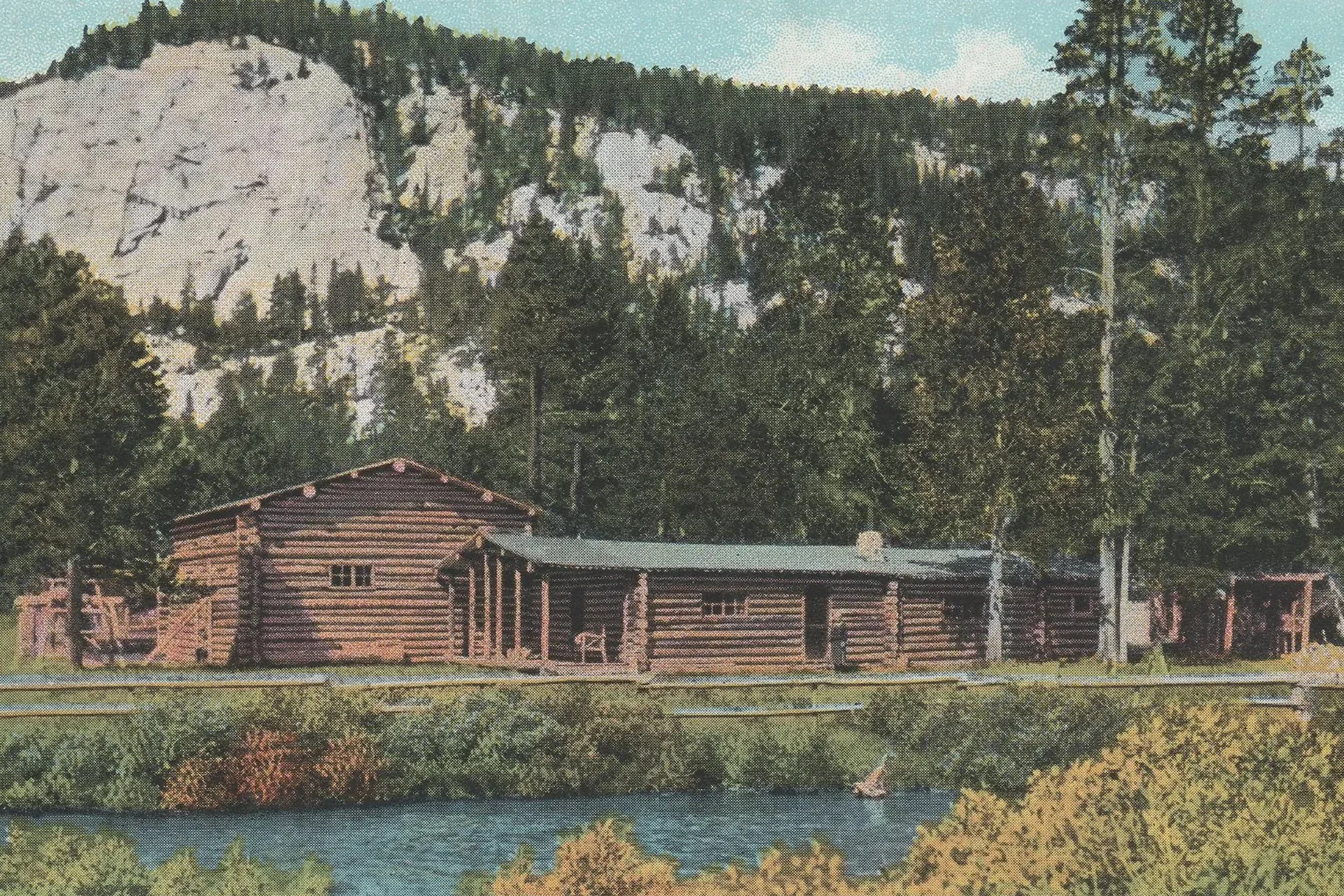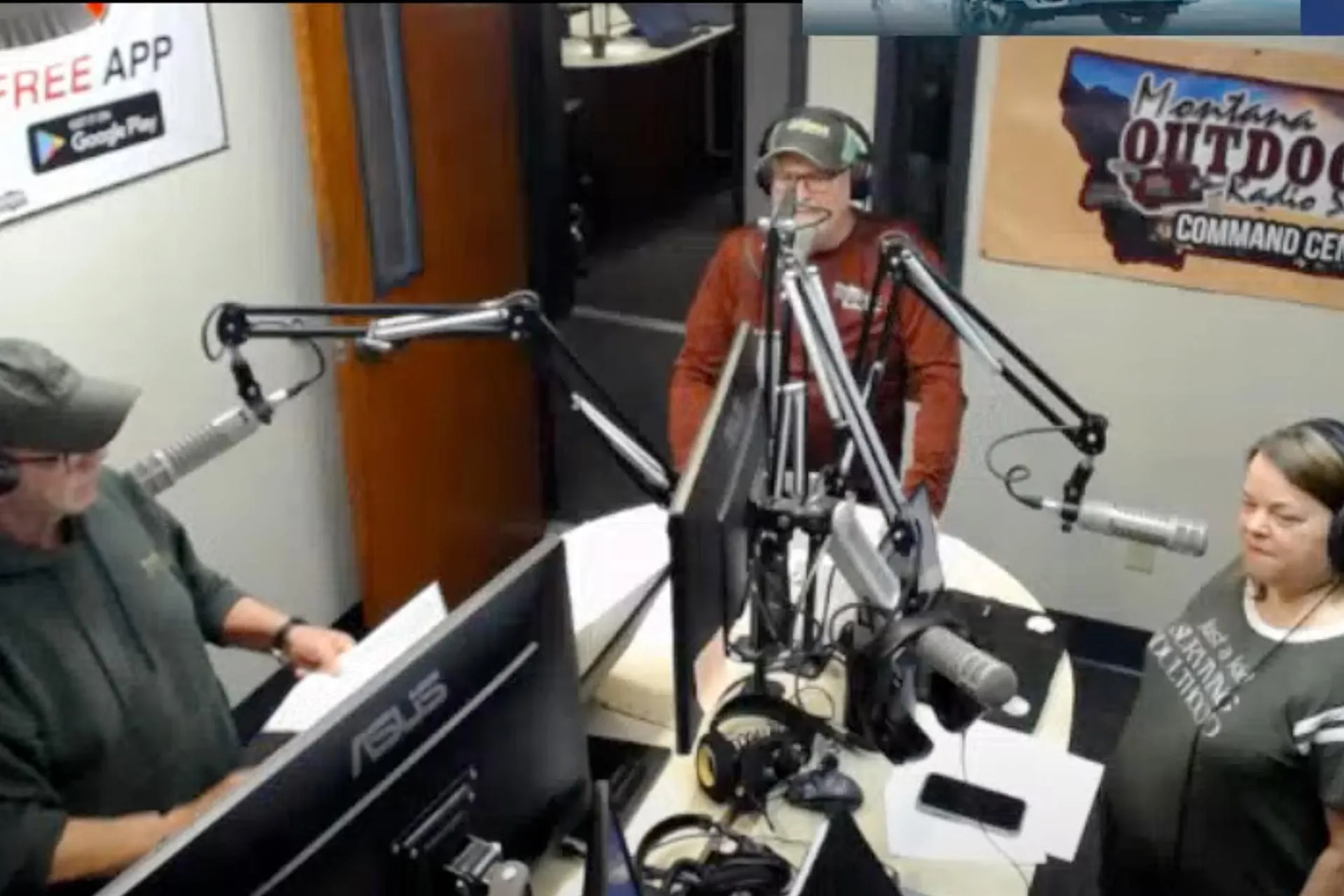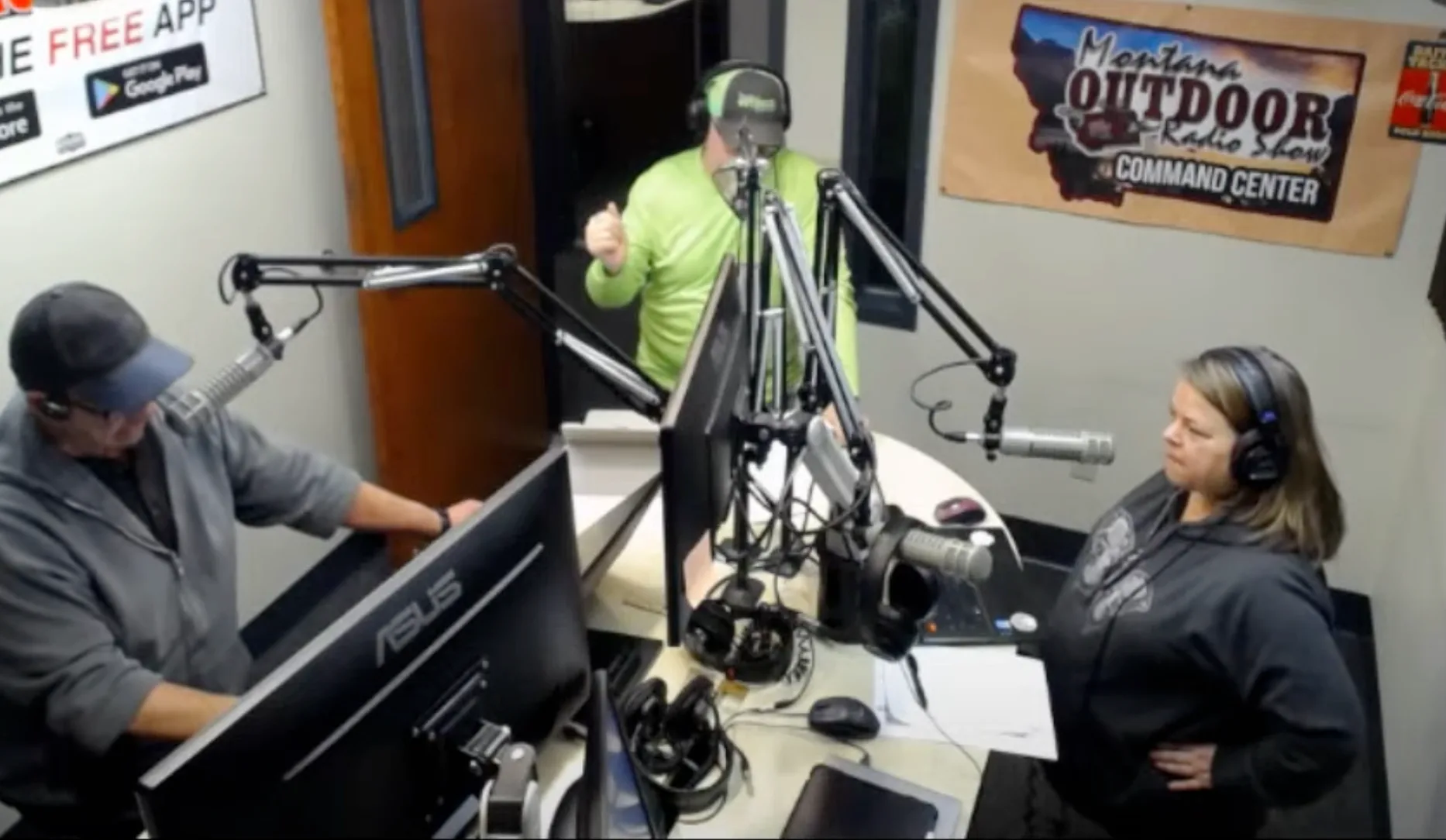BRETT FRENCH | bfrench@billingsgazette.com
Shortly after doffing his cowboy hat with a flourish from atop his horse, like the idolized hero of a Western movie, the rider crashed through a pine tree’s branches as if the horse was attempting to dislodge the dude.
The black and white film depicting the incident was from an August 1930 trip into the Beartooth Mountains and the Camp Sawtooth dude ranch. The 16-milimeter footage also captured men dancing in a circle around a large campfire, rushing to the outhouse and holding up stringers of freshly caught trout.
“These are folks who live in the big city,” explained Norm Tjeltveit.
The Billings amateur historian narrated the film as it was shown at the Carbon County Historical Society and Museum in Red Lodge on April 10 to a crowd of about 50 people.
“They’re not used to the way things work in Montana,” he added. “So we’re out in the wilderness. We’re having fun.”
Although a silent film, writing introduced the different scenes: “Looking around at the scenery and getting accustomed,” noted one as the camera pans to views of the surrounding mountains, cabins and smiling dudes gathered near a porch.
Postcards lead down rabbit hole
Showing the 30-minute adventure film was the culmination of a three-year journey for Tjeltveit.
It all started when he was going through old family memorabilia and came across a series of 24 postcards sent from an F.I. Johnson to a Martin Myrebo. Tjeltveit was unfamiliar with both men, so he started digging.
Turns out, F.I. Johnson was the founder of Camp Sawtooth. Myrebo owned a mercantile in Roscoe, a small community northwest of Red Lodge, and also was the town’s postmaster. The two were also neighbors.
Coincidentally, Tjeltveit’s father was a postmaster, as was Tjeltveit.
The postcards from Johnson were today’s form of social media. He’d send the notes from Europe, where he was working for the Red Cross, to Myrebo who would spread the news of their neighbor’s travels abroad in the turbulent era following World War I.
It was while investigating Johnson’s past, which became much easier when Tjeltveit learned his first name was Flavius, that he came across the history of Camp Sawtooth and the black and white film.
A copy of the film was donated to the Red Lodge museum by relatives of Leon Lichtenfeld, a cello player “of national renown” who performed in the Drake Hotel orchestra. He owned the movie camera that made the film, a technology developed only a decade earlier.
Lichtenfeld was one of five WGN radio employees to make the trip from Chicago to Red Lodge, via train, and then ride into Camp Sawtooth.
“The accommodations were not a five-star resort,” Tjeltveit said. “That wasn’t the purpose of why they were here.”
Trout fishing heaven
They were there, like so many other dude ranch guests of the era, to enjoy the outdoors — hiking, fishing, horseback riding and dancing around the campfire.
Most of the high mountain trout were planted in the lakes and streams, including young brook trout that grew fat enough to draw attention.
“The fishing up in this area in this time period was pretty stunning,” Tjeltveit said. “I think Outdoor Life (magazine) had a national competition and the largest eastern brook trout was taken from this area: 6 pounds, 14 ounces, I believe, 23 inches long.”
In addition to the fishing, a large advertisement in the Red Lodge publication, The Picket-Journal, in 1926 noted a trip to Camp Sawtooth provided “an aeroplane view without the danger of a tail spin or nose dive.”
The camp was located at an elevation of 8,500 feet. The nearby jagged top of Sawtooth Mountain, from which the camp got its name, tops out at more than 10,200 feet.
The family ties that bind
F.I. Johnson, a Red Lodge pharmacist, founded Camp Sawtooth in 1922. The camp switched hands a few times after Johnson sold out, eventually closing at the end of the 1965 season.
Johnson died only a month later at the age of 90.
At the time the camp closed, the Bradshaw family of Billings was running the operation.
Reflections on the past
Billings retiree Gary Bradshaw viewed the film with a bit of wistfulness. He had spent his summers from ages 10 through 19 working at Camp Sawtooth after his parents took over the operation.
“It was a great way to grow up,” he said. “What my parents went through to have that, you don’t really appreciate it until you’re older.”
As a youngster, Bradshaw would help trail 17 horses into camp from the base of the Beartooth Highway south of Red Lodge, a route that took eight hours. Even though the Beartooth Highway was operational by then, Bradshaw said his father thought it would be more stressful for the horses to be trailered to the top than to walk in.
One horse, packed with a load that included a rifle, was so happy to arrive at the lodge that it started bucking, ejecting its entire load. The rifle landed muzzle down in the dirt, standing upright, Bradshaw recalled with a laugh.
By this era of the dude ranch, the late 1950s to mid 1960s, guests would drive to a trailhead across from Long Lake for a short 4.5-mile horse ride in.
So engrained is the memory of that route that Bradshaw said, “I can still ride that trail from the pack station in with my eyes closed.”
End of an era
The Forest Service wanted to see improvements to the aging buildings, a task made difficult by the short summers at high elevations. Five years after the Bradshaws reluctantly gave up the lease, the agency burned the structures, erasing signs of the camp alongside Little Rocky Creek and its aged log buildings.
Tjeltveit, who grew up in Red Lodge, now wishes he would have known about Johnson and Myrebo when he was a youngster. Myrebo’s brother was one of the witnesses on the naturalization application for Tjeltveit’s grandfather. Myrebo was the first to sign the register at his parent’s 40th wedding anniversary party.
Although his days of hiking or horseback riding are past, Tjeltveit said he regretted not exploring the scenic mountain meadow to further link his family’s past to his presence.
Sidebar:
The early days of dude ranching
Before the Beartooth Highway was completed in 1936, Camp Sawtooth employees and guests would travel to the lodge by horseback.
The trip started about 11 miles south of Red Lodge. Traces of the old trail can still be seen on the mountainside near Vista Point. It was a daylong ride into the camp.
By 1929, F.I. Johnson and his helpers had erected a two-story main building and six other structures with plans to add one more.
Dude ranching began in 1879 when the Eaton brothers began taking in clients at their Medora, North Dakota, ranch. The first dude ranch in Montana was the OTO, located just north of Yellowstone National Park, established in 1912.
Near Red Lodge, numerous other dude ranches popped up around the same time as Camp Sawtooth, including Camp Senia along the West Fork Rock Creek, and Richel Lodge on the Main Fork Rock Creek.
The Dude Ranchers’ Association was founded in 1926 with 26 members. By 1935 that had grown to 114 just in Montana and Wyoming.
Members of the association would travel to large cities like Chicago, New York and Cleveland in the off-season to promote travel.
“Newspaper articles, talk about, OK, we’re going to the show, let’s make it interesting,” said Norm Tjeltveit, who researched Camp Sawtooth’s history. “Let’s take some live bears. Let’s take some coyotes with us.”
When visitation stalled, the coyotes would be encouraged to howl, he said.

Cover photo is a Curt Teich image: This undated, hand-tinted photo shows Camp Sawtooth. Although the buildings were burned down, evidence of the old dude ranch remains in Wyoming’s Shoshone National Forest. CCHSM collection











